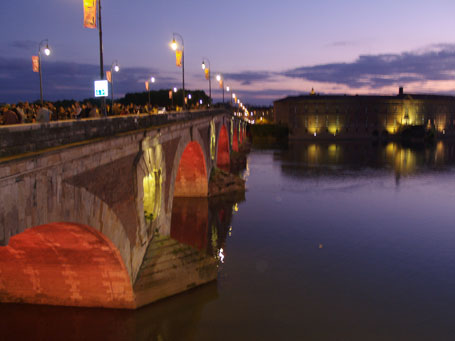Europe Road Trip (Page 2 of 6)
By Tom Kagy | 11 Jan, 2026
Barcelona is an ideal place to begin a road trip across southern Europe.
Shopping
Plan to buy some of your clothing in Europe. We were pleasantly surprised by the reasonable prices. What with the lower Euro, bargain-conscious Southern Californians could really roll up their sleeves and get down to serious shopping. Spain offered excellent bargains on shoes and handbags, especially in the smaller cities of Pamplona and Zaragoza but even in Barcelona’s touristy Gothic Quarter. Genoa’s small boutiques offered stylish Italian-made items at prices comparable to what we pay for chain-store imports in the L.A. area. Even ritzy Cannes surprised us with value-priced fashion. On the other hand, try to avoid buying electronics in Europe. You will pay about 12-15% more than in Best Buy or Walmart.

Visitors to Europe are prone to malnutrition thanks to a superabundance of irresistible pastry shops like this one on Barcelona’s Plaça de l’Angel, a popular starting point for a stroll through the lively Gothic Quarter.
Smoke and Odors
The most unpleasant aspect of a European trip is the ubiquitous cigarette smoke. Most EU nations have begun to require non-smoking areas inside restaurants but not outside where most summer visitors are likely to sit. Unfortunately, about a third of adults seem to smoke in France, the country in which road trippers are likely to spend the most time. Italians are also heavy smokers. Spaniards smoke noticeably less, with about a quarter of adults engaging in the nasty habit.

Le Pont Neuf, Toulouse’s oldest bridge, swarms with revelers on a warm June evening. The festive crowd stretched a half mile back to Place du Capitole and beyond. The arches of the 16th-century bridge are decorated with red ambient lighting.
Another unpleasant surprise is sewage odors. While most streets and even alleys aren’t plagued by unpleasant smells, we were ambushed by the stench of human waste at random places without rhyme or reason. Perhaps one of the costs of living with beautiful old architecture is the difficulty of bringing sewer systems up to modern standards. On the plus side, we were pleasantly surprised at not encountering any dirty toilets in our countless pit stops at service areas and other public facilities. On several occasions, however, both genders had to endure the curious exertion of squatting without touching toilets which, inexplicably, were seatless by design.
Living Culture vs. Pickled Culture
Every town has a spot or two in which the most appealing aspects of local culture, new and old, combine and alchemize into something truly authentic, memorable. Seeking out and enjoying that living cultural synthesis was our main goal at every stop. Palaces? Museums? Churches? Fine, but only if they were integral to the local scene. Relics and ruins are wonderful if they enrich the moment, but we didn’t want to go out of our way to seek them out. Living culture is infinitely more interesting and educational than dead and pickled culture. Fortunately, the magical thing about Europe is that ancient structures are so often enlisted to serve the living and not merely to remain frozen in time.
What follows is a list of the places we feel merit a place on the itinerary of any road trip through southwestern Europe.

Beautiful old architecture, appealing shops and eateries and a steady stream of visitors from all over the world make the Gothic Quarter the center of Barcelona’s street scene.
Barcelona’s Gothic Quarter (Barri Gotic)
A maze of timeless alleys open out at regular intervals to plazas lined with magnificent old stone palaces and churches and filled with open air tables of revelers enjoying the magical night air of summer. Barri Gotic is the city’s real highlight, not the more famous Ramblas to the east which have become Barcelona’s equivalent of tourist-ridden Hollywood Boulevard. It’s one of western Europe’s best summer party towns.
"Genoa's small boutiques offered stylish Italian-made items at prices comparable to what we pay for chain-store imports in the L.A. area."

The Cathedral of Santa Eulalia in Plaça de la Seu, embodies 14th Century Catalan Gothic architecture, and is Barcelona's most famous structure. As of the summer of 2010 it was undergoing an ambitious renovation effort.
Articles
- Tens of Thousands Turn Out for Minneapolis Anti-ICE Protests
- Musk's X to Open Algorithm to Public in Response to EU Pressure
- China Encourages Taking Risks in Bid to Close AI Gap with US
- Maduro Escapade Inspires Talk of a Decapitation Strike on Taiwan
- Greenland's Independence Movement Weakens Denmark's Hand
Asian American Success Stories
- The 130 Most Inspiring Asian Americans of All Time
- 12 Most Brilliant Asian Americans
- Greatest Asian American War Heroes
- Asian American Digital Pioneers
- New Asian American Imagemakers
- Asian American Innovators
- The 20 Most Inspiring Asian Sports Stars
- 5 Most Daring Asian Americans
- Surprising Superstars
- TV’s Hottest Asians
- 100 Greatest Asian American Entrepreneurs
- Asian American Wonder Women
- Greatest Asian American Rags-to-Riches Stories
- Notable Asian American Professionals

